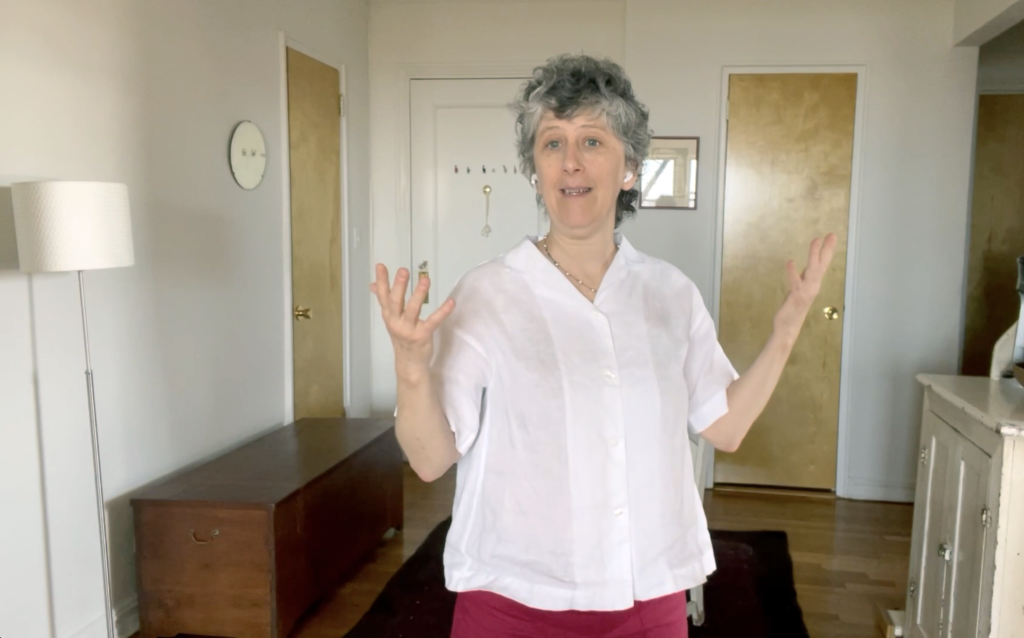
If you have tight hips to start with, and you sit for 6 – 8 hours a day even 4 days a week, you may be running into some trouble. My clients struggle with discomfort in sitting for two main reasons:
- They have to sit in a chair attentively for work
- They have a meditation practice that is either distractingly uncomfortable or downright painful
Here are some of the words commonly entered in search engines in connection with “sitting hurts”:
lower back
upper back
hips
hamstrings
knees
testicles (yup!)
knees
buttocks
sciatic nerve
So, what doesn’t hurt when you sit? Life has to be better than this!
Trust me. You can be a skilled athlete or have three embodiment trainings under your belt – and still not be able to sit in a chair for 6-8 hours straight because our bodies just aren’t designed for it. I can tell you that I have, slowly over time, found a solution – because I had to!
Professionals like teachers, therapists, counselors, and coaches must also skillfully attune to others, often losing body awareness in the process. That loss can significantly raise your pain levels in the long run.
The good news is that playful, fluid movement can open up and utilize all your joints at once, in a kind of happy orchestral symphony of movement. This is going to bring much better results than focusing in on tight hips alone as if it was all their fault.
You will need a fierce determination to include yourself – your whole body – in your awareness. This is what the entire first year of training to be an Alexander Teacher is about. It’s unfortunate that more trainings don’t start there. This weeks exercise is one way you can do this for yourself – because no one else can do it except you.
Explore alternating gently throughout the whole body between “primary” (towards self) and “secondary” (away from self) micro movements. These two concepts come from the study of developmental movement, which is the basis for the exercise I created for this week’s video. They makes sitting actually pleasurable and healthy.
Primary and secondary are explained in the video, but I thought you’d like to see what they look like in their original form:

Primary: spine curled in a c-shape, limbs and focus folded towards center

Secondary: cervical and lumbar spine extending, focus and limbs out and away from center
This weeks video guides you through a four-step process using primary and secondary:
- Accessing the flow between small primary and secondary movements in standing. You will feel a bit like you are surfing a wave in your ankles.
- Continuing a smooth waving motion between primary and secondary as you lower your body towards the chair, adjusting size and timing to suite yourself and your own needs.
- Continuing the smooth waving motion as your body hits the chair, and continuing as you sit, letting the wave become so small it is almost imperceptible on the outside.
- Riding that this subtle wave motion into standing, again allowing it to be as small, slow, fast or big as you need.
Extra bonus: sitting dynamically in a chair is connected to establishing healthy boundaries and attuning to your self. Everyone can benefit from those things.
Would you be interested in attending a workshop on the topic of sitting in a chair, meditation, or both? Shoot me an email if you would. I’ll keep you posted!
I also recommend using a ball to sit on in addition to a chair, or using a standing desk (HERE is a high end one, and HERE is a $60 photographers stand for your laptop that can be raised and lowered), as well as stretching and extending your legs every hour. But sitting itself could actually be a pleasure, a support, and relief if you reclaim the full capacity of all-joint-movement that you were born with.

